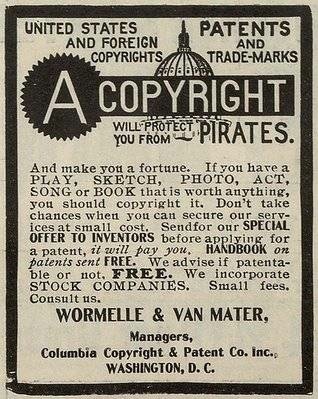TXTDS 224A / FRENCH 224A / HSTEU 290A
History and Future of the Book, Texts and Reading
Copying, Copyright, and Plagiarism
 Today's anxieties about new generative AI tools, like ChatGPT, often point to the unauthorized reuse of copyrighted text as evidence of the dangers AI poses. Copyright laws, along with other conventions for copying and reusing text – like norms for citation and plagiarism – emerged in the 18th-century to regulate a media sphere built on printing technologies. These laws and norms have struggled badly to adapt to digital media and technologies. The struggles tell us a lot about the impacts that new technologies, such as generative AI, are having.
Today's anxieties about new generative AI tools, like ChatGPT, often point to the unauthorized reuse of copyrighted text as evidence of the dangers AI poses. Copyright laws, along with other conventions for copying and reusing text – like norms for citation and plagiarism – emerged in the 18th-century to regulate a media sphere built on printing technologies. These laws and norms have struggled badly to adapt to digital media and technologies. The struggles tell us a lot about the impacts that new technologies, such as generative AI, are having.
This quarter, we’ll aim to better understand the impacts of changing technologies on the ways we write, read, do research, and preserve texts, by focusing on practices, norms, and cultures of copying from the world of medieval manuscripts to the rise and spread of printing as a copying technology in early modern Europe (capable of producing "exact" copies at scale) to modern electronic technologies, such as photocopying and digitized text, that allow for instant copying.
"Imitation is the sincerest form of flattery." We'll see, in fact, that there has always been a fine and shifting line between imitation and theft; between authenticity and forgery; between an acceptable citation of sources and plagiarism; between an original and a copy; and between the legitimate reuse of text and breaches of copyright. In law courts, schools, and in various parts of the public sphere, this line has been redefined and renegotiated over time, especially as new technologies -- printing in the 15th century, Xeroxing in the 20th, and digital texts today -- have disrupted prevailing practices, expectations, and understandings of what it means to copy and be original. We're certainly in such a moment now and it is timely to consider the history behind our current grappling with issues like copyright and plagiarism.
Among other topics, we'll explore:

- historical copying techniques and technologies, from handcopying to printing to 20th- and 21st-century tools, such as carbon paper, Xerox machines, and the range of copying possibilities afforded by digitial technologies: from copy/paste to scanning to OCR to predictive machine learning tools.
- the tradition and history of laws, regulations and ethical norms around copying: above all, the development of copyright law and conventions around citation and plagiarism; the concept of “fair use” and "transformative" use. The Google Books case.
- copying as a critical technique for the transmission, preservation, and transformation of texts over time, in the form of transcriptions, reprints, editions and reeditions, adaptations, and in remediations where texts are "translated" from one medium to another: from manuscript to print, print to digital, print to film, etc.
- the political and cultural implications of scale, from the impacts of the printing press (for example, in the mass reproduction and circulation of Protestant writings in the early 16th century) to the political and cultural effects of virality today
- related ideals of originality and genius, which copyright laws were formulated in the 18th century to protect: the notion of the original creator and the original document, from which others are copied
Coursework will include short weekly writing assignments, hands-on exercises, quizzes, leading discussion on a reading, and a final project.
Please reach out to Geoffrey Turnovsky with any questions
padding: 0 30px 20px 0;
